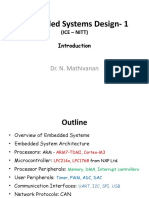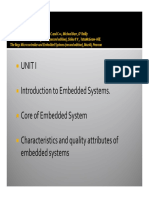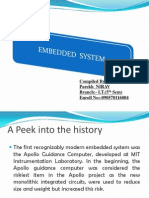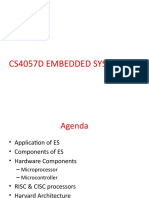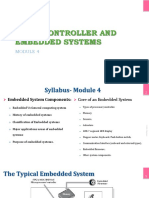100% found this document useful (1 vote)
20 views62 pagesLecture 0 Overview of Embedded System
An embedded system is a specialized computer designed to perform dedicated functions, often integrated into larger devices, and characterized by its use of microcontrollers and real-time operation. These systems are compact, cost-effective, and found in various applications from household appliances to automotive systems. They operate with limited resources and stringent reliability requirements, often utilizing specific programming languages like C and C++.
Uploaded by
arav2245789Copyright
© © All Rights Reserved
We take content rights seriously. If you suspect this is your content, claim it here.
Available Formats
Download as PDF, TXT or read online on Scribd
100% found this document useful (1 vote)
20 views62 pagesLecture 0 Overview of Embedded System
An embedded system is a specialized computer designed to perform dedicated functions, often integrated into larger devices, and characterized by its use of microcontrollers and real-time operation. These systems are compact, cost-effective, and found in various applications from household appliances to automotive systems. They operate with limited resources and stringent reliability requirements, often utilizing specific programming languages like C and C++.
Uploaded by
arav2245789Copyright
© © All Rights Reserved
We take content rights seriously. If you suspect this is your content, claim it here.
Available Formats
Download as PDF, TXT or read online on Scribd
/ 62

